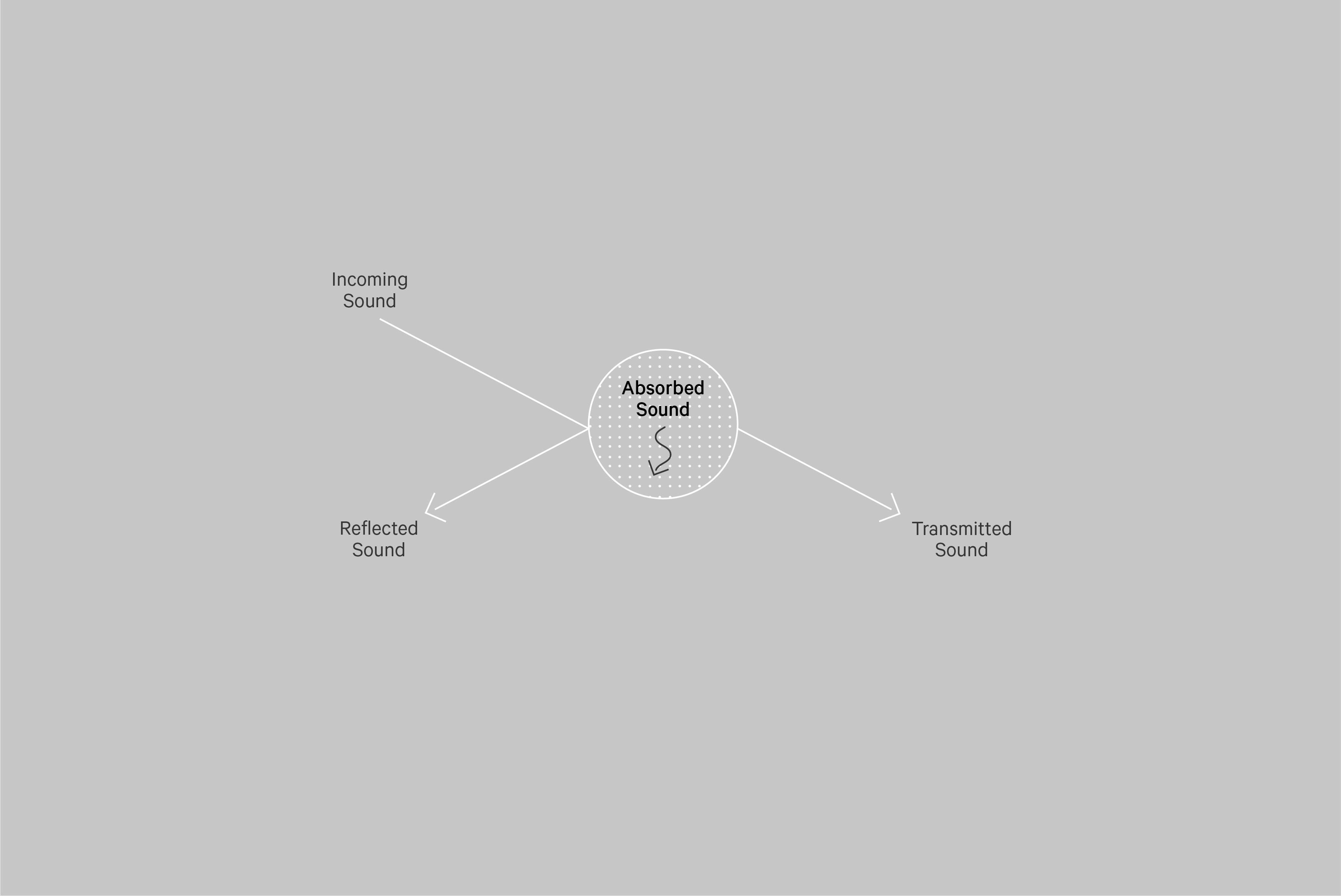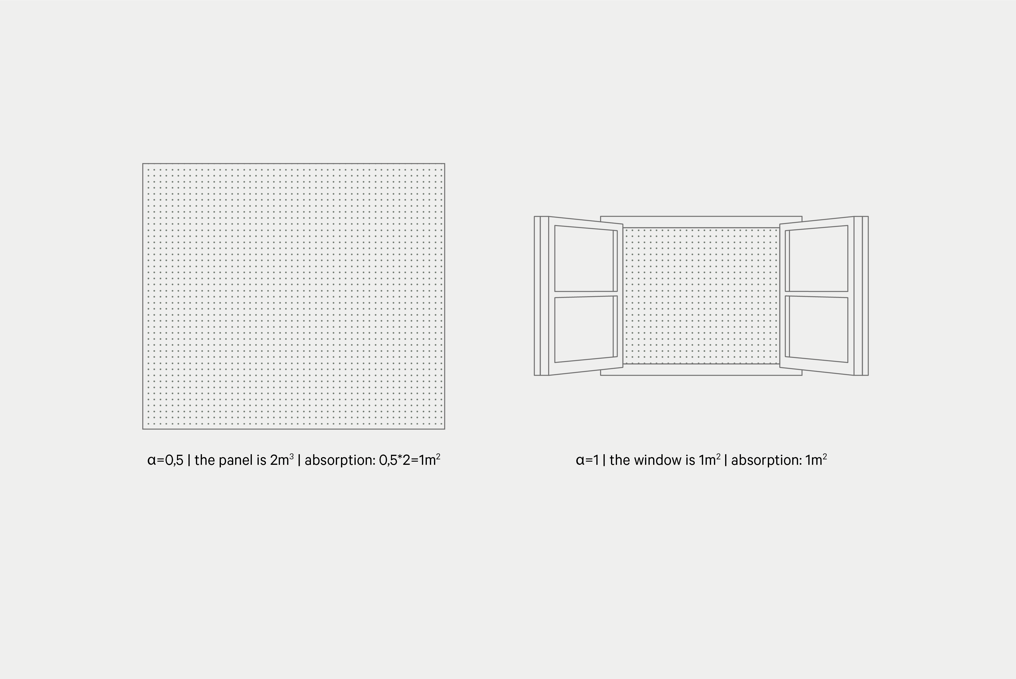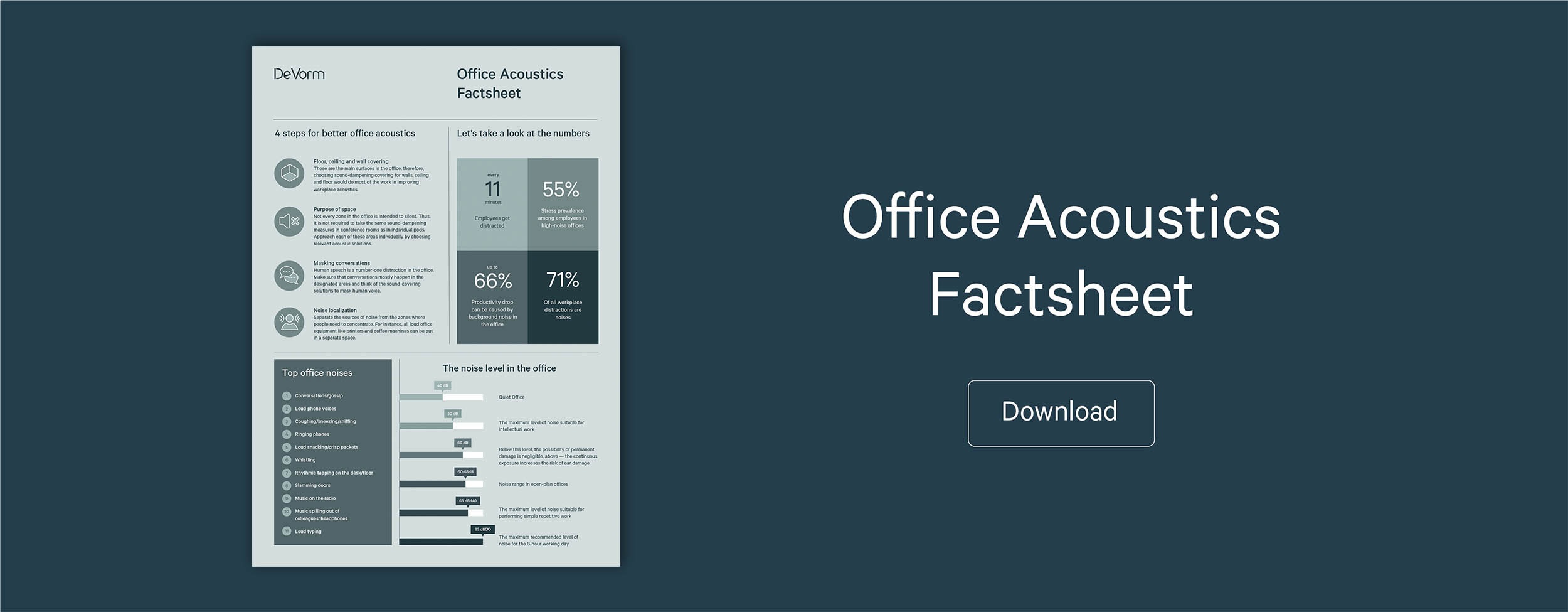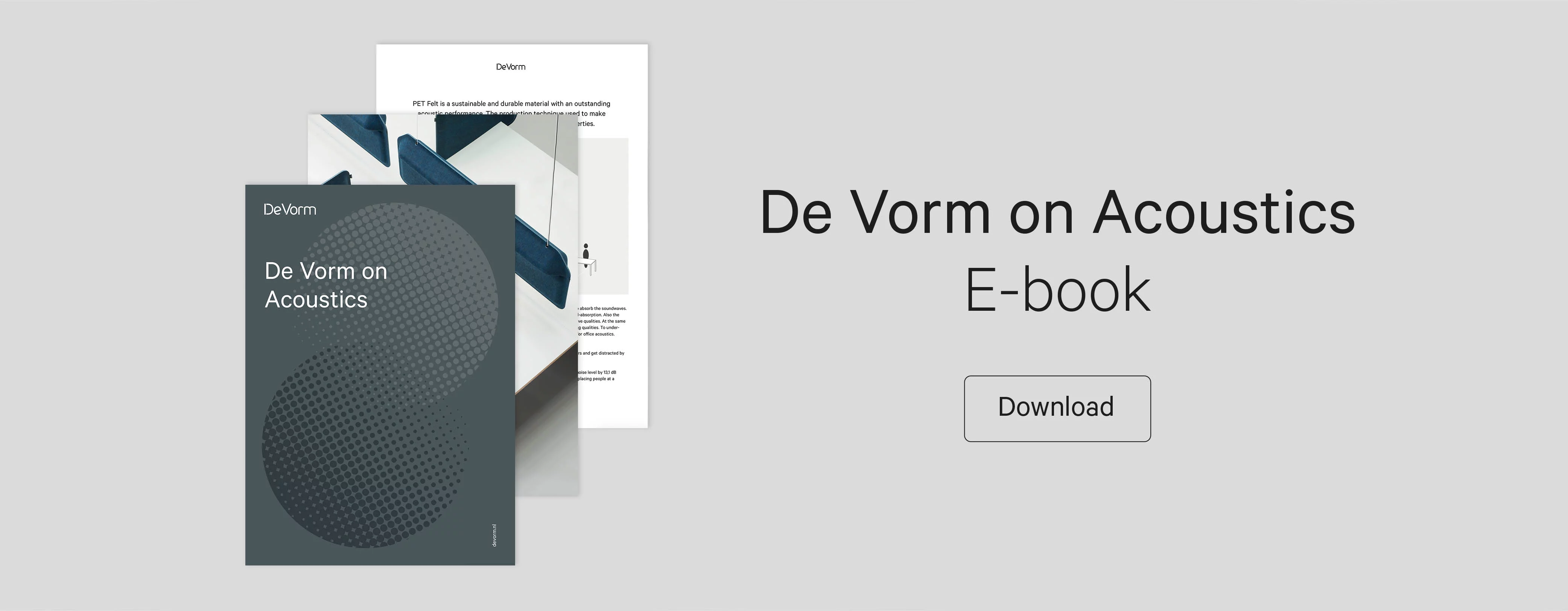Journal
The Science Behind Acoustics
Acoustic solutions in office design: we all know that we need to do something with it to ensure the employees’ well-being and productivity. However, it doesn't stop with the installation of a wall panel here and a partition there. We also need to know how acoustic products work and, above all, ensure that the measures offer the right solution. But before we come up with a solution, we must know what we’re doing, gaining science-based knowledge to do so. Without being too theoretical, we would like to give you insight into the basics of the acoustics.

Not noise, but sound. Not silence, but tranquility
What’s the balance between silence and noise? Earlier we wrote that absolute silence in the office isn’t the option. Because even in an open field on a quiet day and without the noise of traffic and animals, the sound background is still about 25 decibels (dB).
By comparison, the average noise level in an office is 43 dB. The noises you hear are installations and ambient noise. It’s a pleasant sound level to work in, but an abrupt ringing of the phone may be disturbing. And when two people are talking to each other, this is about 60 dB. Ideally, the noise level should be below 50 dB to experience it as not disturbing.
Absorption and insulation of sound
So, absolute silence isn’t the goal, but finding the right balance between sound and tranquility is. Sound must be absorbed and insulated in the right places.
The difference
There’s a difference between absorbing and insulating sound. With absorption, the sound causes friction. The moving air particles vibrate the absorption material and the sound loses its energy. In an office environment, you want to use absorption because it affects the reverberation time: the time required for sound to fade away in a closed space.
With insulation, you try to isolate sound so that it doesn’t end up in a place where you don’t want it. Normally, insulation is used in rooms to prevent noise from the outside that enters the room.
Sound insulation and Rw values
Sound insulation is achieved with hard and heavy materials. Sound insulation measures reduce the sound transmission between two rooms, blocking sound waves. In any case, you want to avoid that a conversation in room X can eavesdrop by other people in room Y. In an average office, heavy sound insulation isn’t necessary as this is an expensive investment as well.
The degree of sound insulation of a product such as a system wall is expressed in an Rw value, which means the Weighted Sound Reduction Index. An Rw value for a system wall indicates up to which dB level sound is blocked in a laboratory room. In this space, the sound is tested without other sounds such as flanking noises, circulation noises or sound leaks. The Rw value can be used for comparing the sound isolation properties of different materials. You can calculate this by using the formula of the following example:
A sound source produces 50 dB and a wall has an Rw value of 42 dB.
The sound transmission is 8 dB.
Ctr value: the ‘’problem’’ value in sound isolation
Ctr is often used in combination with the Rw value. Ctr stands for the adjustment factor used to explain a low-frequency sound. This indicates the problem of sound insulation. Ctr is always a negative number, so Rw + Ctr has a lower value than an Rw value.
Sound absorption and NRC values
Sound absorption is achieved with soft materials that remedy the echo effect. It is measured by an NRC value: Noise Reduction Coefficient. The higher the value, the higher the level of sound absorption. Just like with sound insulation, the exact measures required in an office design depend on the situation. Consider every factor such as: how spacious is the room, how many people work there and what materials (furniture, ceiling, etc.) have already been used.

Reverberation
In an office environment, the reverberation time is influenced by the application of sound absorbing materials. The more energy the reverberation sound loses when passing through sound-absorbing materials, the less the sound is reflected. This shortens the reverberation time to the desired value.
Absorption Coefficient
The absorption coefficient (Alpha, α) is a value that expresses how much energy is not reflected by a certain material. This value can be compared to an open window of one square meter. The sound that goes into an open window gets fully absorbed.
 The absorption coefficient depends on the frequency, the angle of the sound source and the position of an acoustic product with the wall.
The absorption coefficient depends on the frequency, the angle of the sound source and the position of an acoustic product with the wall.
Sound and offices
For offices, insulation happens when disturbing sounds, like conversations, are isolated in a certain place.
Sound attenuation
Sound waves expand spherically. This means that the sound energy is distributed over a larger surface area. The sound intensity and thus the sound level decreases as you move further away from the sound source. When you keep your distance to the source even more, the sound level decreases in decibels. This difference can be calculated using the following formula:
L1 - L2 = 20 log (r2/ r1)
r1: sound pressure level at Initial location
r2: sound pressure level at the new location
L1: distance from the noise source to the initial location
L2: distance from the noise source to the new location
The ABC construction
The ABC construction contributes to the ideal acoustic performance: Absorb, Block and Cover. This is a holistic approach where the sound isn’t only absorbed and insulated but covered due to noise cancellation and sound masking techniques too. Read our article ‘’5 acoustic solutions for office design’’ for more depth into this construction.
Bringing it all together
Given the various factors, the right acoustic solution is always custom. However, basic knowledge is needed to define an acoustic problem.
Either way, the balance between sound and tranquility is important. Ensure sufficient sound insulation values between the workplaces and open spaces. Use Rw values to compare different sound insulations of an acoustic wall. Pleasant acoustics are achieved by combining the right sound insulation with sound absorption. Immerse yourself in sound masking and noise-cancelling techniques.
Because of the customization, it’s important to involve the necessary experts. We recommend creating a team with the necessary expertise such as an interior designer and an acoustic expert.
Curious to see what interior products of De Vorm contribute to your acoustic solutions? Learn about it in our next article: PET Felt Solutions to Reduce Office Noise or download our free e-book on Acoustics.




